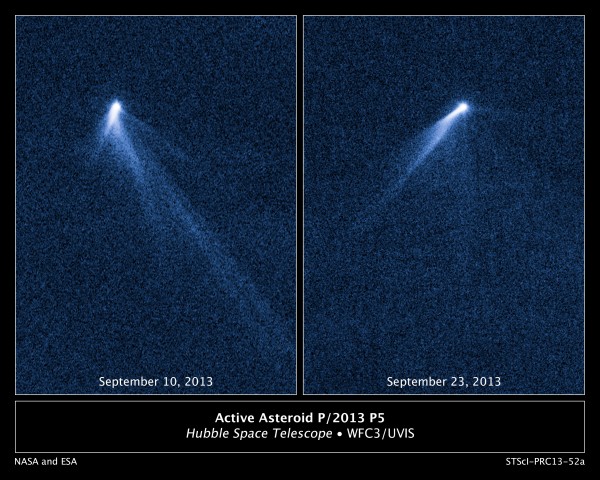Back in September an amazing asteroid flew by in outer space.
It first appeared as a fuzzy dot, seen by a PanSTARRS Survey telescope in Hawaii. Wondering what it was, astronomers directed the Hubble Space Telescope to take a look. Boy, were they surprised. It has six tails!
This is not a normal asteroid. Asteroids are very tiny planets and — until now — they don’t have tails. This one is only 700 feet across and is traveling around the sun in the asteroid belt between Mars and Jupiter. Like it’s traveling companions in the Flora asteroid family, its probably a chunk left over from a planetary collision.
So why does it have tails? Comets have tails because they are made of ice, dust and small rocks. When they get near the sun the ice evaporates, causing a long streamer of debris. But this asteroid has no ice. It must be streaming dust. Lots of it.
Scientists named it P/2013 P5 and ran its behavior through modelling software at the Max Planck Institute for Solar System Research. The model showed this asteroid is spinning so fast that anything loose on the surface (dust) is traveling toward its equator. There it accumulates and episodically escapes the asteroid’s weak gravity, arcing into outer space. Yow! Six tails!
Why is it spinning so fast? Scientists theorize that the pressure of sunlight could have pushed P/2013 P5 into a tail spin.
Photos, above, from the Hubble Space Telescope show it spinning like a lawn sprinkler in the sky.
Read more here at NASA’s Hubble website.
(images of Asteroid P/2013 P5 from the Hubble Space Telescope, courtesy of NASA)
